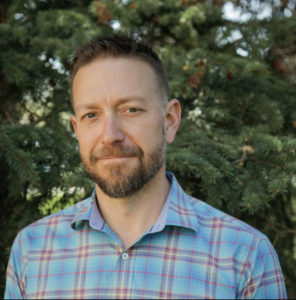Video produced by NASA’s Goddard Space Flight Center.
Michael Falkowski, an ecosystem scientist at Colorado State University, will be at the Kennedy Space Center in Florida on Dec. 4 to watch the launch of the SpaceX Falcon 9 rocket, which will be carrying supplies, science experiments and an earth observation sensor to the International Space Station.
He won’t be there as a tourist. Falkowski, who is currently on a two-year detail as a program scientist at NASA Headquarters in Washington, D.C., is providing programmatic support to a team of researchers that will use data collected by the sensor to craft three-dimensional maps of the world’s temperate and tropical forests with unprecedented levels of detail and spatial coverage.

Led by investigators at the University of Maryland, the project is known as the Global Ecosystem Dynamics Investigation — or GEDI, pronounced “Jedi” – and the sensor will be attached to the Japanese Experiment Module on the International Space Station for the next two years. Scientists from NASA’s Goddard Space Flight Center, the United States Forest Service, Brown University, Northern Arizona University and University of Massachusetts are also part of the team.
From the station, GEDI’s advanced laser technology will uncover the three-dimensional structure of forest ecosystems around the globe. GEDI will soar over both the dark side and the light side of Earth at more than 17,000 miles per hour, and measure the height of foliage, branches, trees and shrubs below. Scientists hope this will yield new insights into how much carbon forests are storing and releasing.
Falkowski will work with the science team and senior NASA management once the sensor starts collecting data.
“This will be the first space-borne sensor specifically designed to measure three-dimensional properties of vegetation with a high level of precision and accuracy,” he explained.
Data over time
Researchers plan to estimate not only how much carbon forests around the world store and sequester, but also how much that changes over time due to fire, harvesting, or other disturbances as well as what happens as the trees grow. The GEDI mission will help to better understand these forest carbon dynamics.
“We’d like to be able to understand what the role of forests are,” said Ralph Dubayah, principal investigator of GEDI and a professor of geographical sciences at the University of Maryland, College Park. “We want to know how much carbon is being stored in trees because if we cut those trees down, that’s a potential source of carbon dioxide in the atmosphere.”

Falkowski has previously conducted this type of research, but not at this global scale. Prior to landing this assignment at NASA, he had been providing the GEDI science team field measurements and airborne datasets that they will use for calibration and validation.
“Over the next two years, using this sensor, we expect to make 10 billion observations of forest structure globally,” he said. “We can start to look at changes through time in the amount of carbon stored in forests.”
Data from GEDI will become publicly available within six months of the launch date.
The launch of this data-gathering phase of the project comes at a time when there is increasing concern about the effects of climate change around the world. The National Climate Assessment released Nov. 23 noted the wide-ranging and immediate impact, including extreme weather events, in every region of the United States, with repercussions throughout our economy.
“The role forests play in the global carbon cycle is critical to understanding what will happen with our climate into the future,” said Falkowski.
In addition to studying forest carbon, the researchers will also use GEDI data to assess biodiversity trends and water resources across the globe. There may also be some applications of GEDI data to aid in weather forecasting.
Read more about GEDI in this news release from NASA.
Falkowski is an associate professor in the Department of Ecosystem Science and Sustainability and a scientist in the Natural Resource Ecology Laboratory, which are part of the Warner College of Natural Resources at CSU.